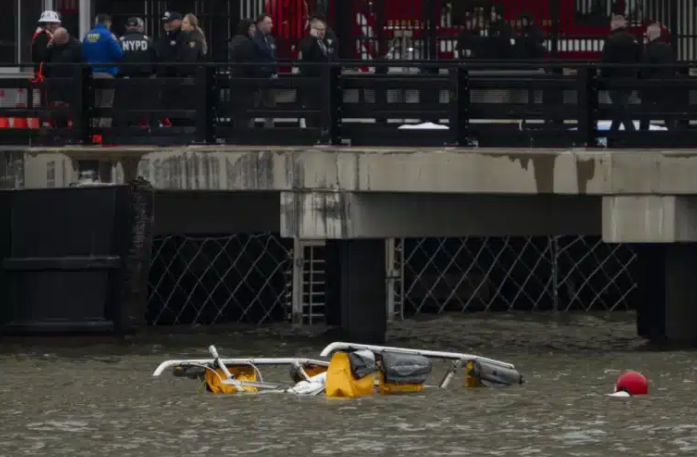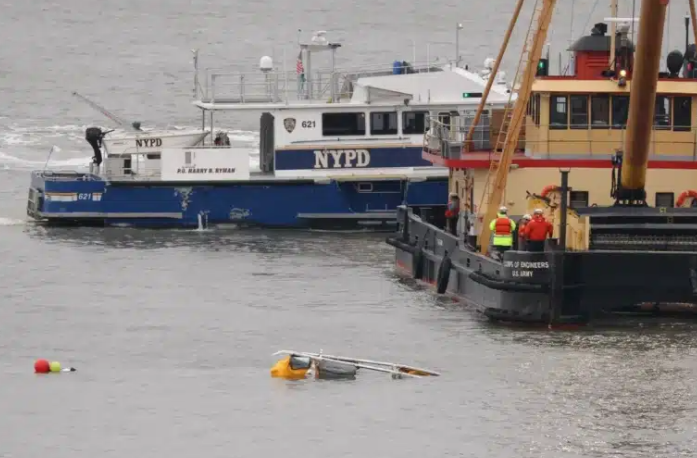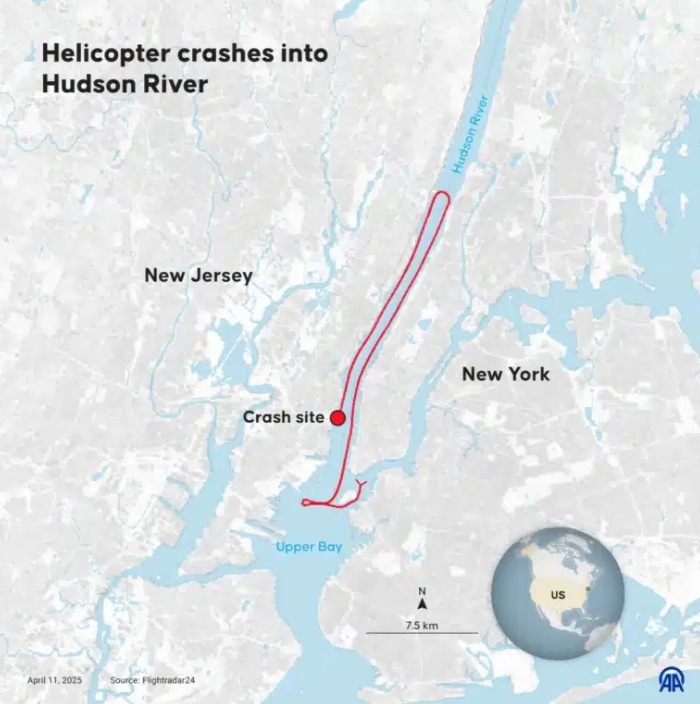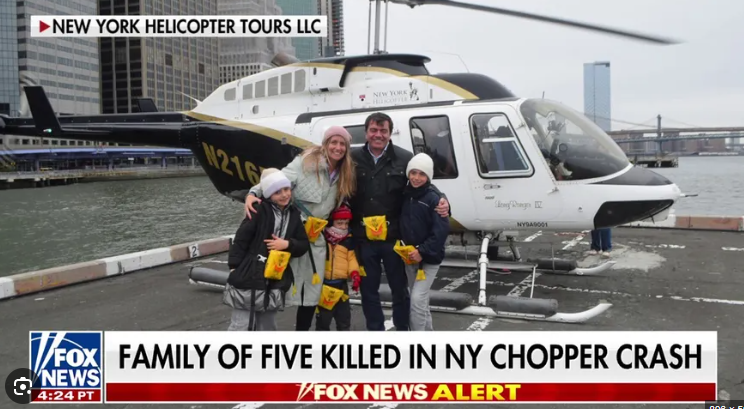Tragic Helicopter Tour Ends in Heartbreak: Six Lives Lost Over the Hudson River
A scenic helicopter ride intended to be a highlight of a vacation for a visiting Spanish family turned into a devastating tragedy above the Hudson River, resulting in the loss of six lives and deep sorrow across two continents.
What should have been a breathtaking aerial tour for Agustin Escobar, a respected global executive at Siemens, his wife, Merce Camprubi Montal, and their three young children—ages 4, 5, and 11—ended in unimaginable horror shortly after takeoff.

At around 3:00 p.m. on Thursday, April 10, their Bell 206 helicopter ascended from a Manhattan helipad, soaring into the overcast sky. Just minutes into their flight, the pilot made a routine radio call indicating a need to stop for fuel. What transpired next happened too quickly to comprehend, yet lingered in the minds of witnesses. The helicopter disappeared from radar, and emergency services were alerted at 3:17 p.m. Soon after, another pilot flying in the area spotted the helicopter—upside down in the Hudson River, fragments floating, with landing skids barely visible. There were no survivors. The identities of all victims, including the pilot, remain undisclosed.
Images of the wreckage, with rescue boats encircling the area and authorities scanning the river, shocked viewers worldwide. Police Commissioner Jessica Tisch confirmed, “The aircraft lost control and hit the water.” Initial investigations indicated the helicopter was on a standard sightseeing route—over Governor’s Island, near the Statue of Liberty, and north along the Hudson—when disaster struck shortly after looping around the George Washington Bridge.
Michael Roth, owner of New York Helicopter, the operating company, expressed his devastation. “He called in saying he was landing and needed fuel. He should’ve arrived in three minutes. Twenty minutes later, he didn’t. We knew,” he said, his voice trembling. “This has shattered us. My wife hasn’t stopped crying.”
Investigators are working tirelessly to determine what went wrong during what should have been a routine flight. Aviation specialists suspect a potential mechanical failure. Kyle Bailey, an aviation analyst, theorizes that a rotor blade separation may have occurred mid-air. If the blades detached, it could lead to a severed tail boom, sending the helicopter into an uncontrollable spin. JP Tristani, another aviation expert, remarked, “If that rotor head separated, that helicopter was doomed. There’s no surviving that.” Witnesses reported hearing loud snapping noises—akin to gunfire in the sky—before watching pieces of the helicopter break off and crash into the water. One bystander described it as an event that “vanished in seconds,” an unsettling blur of metal and sound, followed by eerie silence.
The day’s weather presented challenges—gusty winds up to 25 mph, overcast skies, and light rain—though visibility remained adequate. Even slight mechanical issues during such conditions can have tragic consequences. Emergency crews responded immediately, and air traffic controllers warned nearby aircraft: “Keep an eye on the river. Report anything unusual.” Tragically, by the time they arrived, it was already too late.
In response to the tragedy, the FAA swiftly established a no-fly zone for drones over the crash site as investigators from the National Transportation Safety Board began to piece together the wreckage in hopes of retrieving data and determining a definitive cause.

This heartbreaking incident has reverberated across communities worldwide, especially in Spain, where Escobar was a highly regarded figure. The Prime Minister expressed condolences, describing the loss as “unimaginable.” Escobar, who served as Global CEO of Rail Infrastructure for Siemens Mobility, had strong ties to New York stemming from his earlier career. His leadership, spanning over two decades, significantly impacted sustainable transport networks across Europe, North Africa, and the Americas.
Described as a visionary leader committed to innovation and efficiency, Escobar’s contributions to the future of clean, reliable transit were extinguished in an instant, along with the lives of his young children, who had their whole futures ahead of them. The Bell 206—the helicopter involved—has a long-standing reputation as a reliable tour aircraft. Still, crucial questions remain. How did a seemingly routine flight plunge into chaos? What can be done to prevent such tragedies in the future?
New York Helicopter, which operates just two aircraft, has reaffirmed its dedication to safety and pilot training. However, this commitment is now subjected to scrutiny, particularly after footage emerged showing the helicopter spiraling down in a terrifying descent—its rotor blades seemingly absent. “We’ve never seen anything like this in our 30 years,” Roth stated after viewing the footage. “The blades weren’t even attached. We’re stunned.”
Pictures of the family, smiling on the helipad with souvenir bags, are circulating widely—now imbued with an insufferable sadness.
What started as a joyful family adventure—a simple sightseeing tour—ended in one of the most tragic helicopter crashes in recent memory. The investigation is ongoing, but the wave of grief is immediate, heavy, and profound.

For those left behind, especially those who witnessed the crash or knew the Escobar family, the Hudson River will forever hold more than just memories of the city skyline; it now serves as a poignant reminder of life’s fragility and how swiftly a dream can transform into a nightmare.




